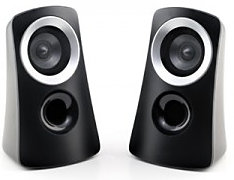How To Buy The Best Wireless Whole-Home Audio System
Want to build the wireless audio system of your dreams, but don’t know where to start? Confused by all the jargon?
No sweat. Even if you’re starting from scratch, this simple guide will help.
When designing a wireless whole-home audio system, keep in mind these factors:
- Types of wireless technology
- Equipment needed
Choosing the right wireless audio technology
The best whole-home audio system can play music in any room, from any source—regardless of the distance.
Whether you will get that luxury depends on the audio equipment’s wireless technology.
With that in mind, here’s how each wireless technology stacks up quality-wise.
Bluetooth – OK
Bluetooth speakers can connect with your smartphone, laptop or other compatible source of music you have.
Some examples are:
- Bose SoundLink Mini Bluetooth Speaker II
- Sykik Sound Wireless Bluetooth Speaker Powerful Bass System
Pros:
- Convenient since most sources of music can already sync with bluetooth
- Cheapest option
- Semi-reliable sound quality for single rooms
- Won’t slow down your Wi-Fi
Cons:
- Unreliable sound quality for multiple rooms
- Can’t place bluetooth speakers far away from music source (smartphone, laptop, etc.
Wi-Fi – Better
Wi-Fi speakers use your existing Wi-Fi to stream audio. You control them from a remote control, which is usually a dedicated app on your smartphone.
Some examples of this are:
Pros:
- Easy to set up in seconds
- Better range than Bluetooth, and therefore more reliable sound quality
Cons:
- Unreliable Wi-Fi can hurt sound quality
- Range may be lacking for larger homes
- Sound quality drops if Wi-Fi gets congested (exceeds bandwidth) due to multiple devices on the network.
Dedicated wireless network – Best
This is an extension of Wi-Fi technology.
When you connect a “bridge” to your wireless router, you’re creating a separate dedicated wireless network that your Wi-Fi speakers can tap into.
A good example of this is Sonos Bridge or Sonos BOOST.
Pros:
- Best sound quality
- Best range
- Ensures great connectivity no matter how large your home or how many Wi-Fi devices you use
Cons:
- Most expensive option
- Uses proprietary technology, meaning the network isn’t compatible with other manufacturers’ products
Getting the right equipment
When building a wireless system, there are “must haves” and then there are “nice to haves.” Knowing which is which helps you get started without breaking the bank.
Whatever equipment you get, make sure all your equipment is compatible and play nice together.
Main components:
- Self-powered wireless speakers— These come in various sizes. Get ones that are the right size for the room and purpose you need it for.
- A remote control— Many wireless systems come with smartphone and tablet apps you can use to control the system. But you may also want a separate remote.
Additional components to consider:
- Subwoofers— Helps deliver strong bass in your surround sound setup.
- Wireless amplifier/repeater— Strengthens your Wi-Fi so you can place speakers anywhere in your home without lowering the quality of sound.
- Dedicated wireless bridge— Improves wireless reliability.
- Soundbar— Brings a huge sound boost to your TV watching experience.
“What brand of wireless audio system do you recommend?“
If you want a wireless audio system that sounds great all over your home, we recommend Sonos. See an overview of how Sonos works.
Sonos speakers communicate directly with each other when they’re using your home’s Wi-Fi network, so they stay in perfect sync all over your home and you never miss a beat.
They also come with a dedicated wireless network option for those of you who don’t have reliable Wi-Fi.
Contact BriteBox and we can help build and install the whole-home audio system of your dreams.
Related Reading
Subscribe To Our Newsletter
Get up-to-date current news, promotions, and industry tips.

